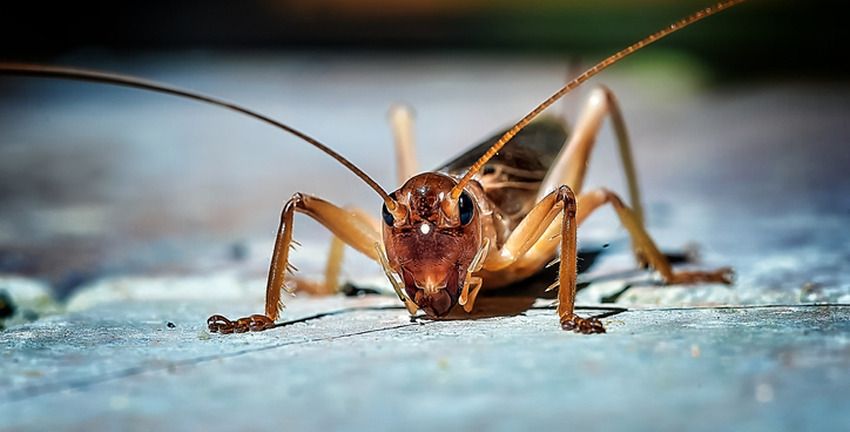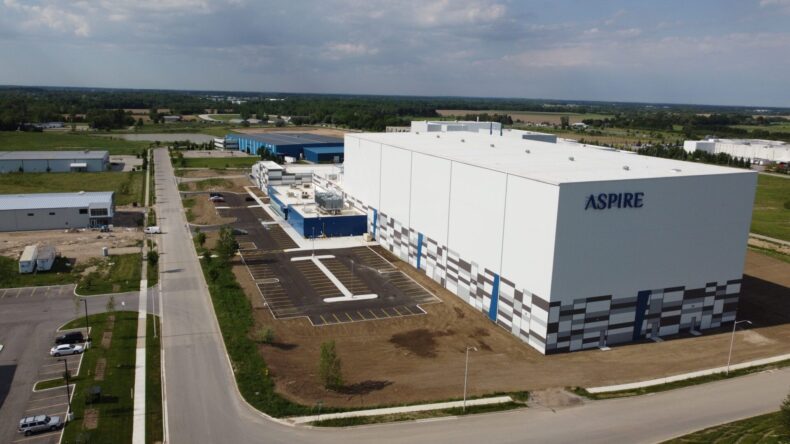If crickets—which pack an attractive nutritional punch with a low environmental impact—are going to carve out a meaningful space in the alternative protein market, two things must happen, says Aspire Food Group cofounder Mohammed Ashour.
Costs must come down, and supplies of consistent, high-quality raw materials must go up, the two motivating factors behind Aspire’s new plant in London, Ontario.
Billed as the world’s largest cricket processing facility, Aspire’s new 150,000 sq ft facility in London, Ontario, supplies frozen whole crickets that customers can further process, Ashour told AFN.
“Our vision was always to build something at commercial scale,” said Ashour, who cofounded Aspire in 2012 with four other MBA students from McGill University, and has spent years determining the optimal environment for farming crickets at an industrial scale.
“Because that’s the only way you’re going to unlock the unit economics that can address some of the fundamental issues that made us excited to start this business in the first place.”
‘We have significant contractual commitments for the majority of our production and expect 100% will be sold within the year’
Most of the equipment at the new plant was installed by the beginning of this year, he said. “So we’re now in the commissioning phase, testing out all the equipment, validating the assembly, areas, and tweaking and calibrating.
“The capacity is up to 12,000 metric tons annually of cricket and an equivalent tonnage of frass [waste, which can be used as biofertilizer]. Our expectation is to get to 50-60% of production capacity by the end of this calendar year, and 100% of production capacity in the first half of 2024.
“We have significant contractual commitments for the majority of our production and expect 100% will be sold within the year,” added Ashour. “We’re already in discussions with some of our customers and investors about site selection for a second commercial facility.”
‘For human food, the low hanging fruit is in Asia and parts of Europe. For petfood we’re seeing excitement across the board’
He added: “Substantially all of our production is going into petfood in North America but we’re also having exciting discussions with companies outside of North America in human food and petfood.”
Aspire signed a memorandum of understanding with one of its investors—Korean food company LOTTE—last year whereby LOTTE would serve as exclusive distributor of food products featuring Aspire’s crickets in key markets in Asia and Europe, he said.
“Crickets are the insects with the most traction from a consumer standpoint and they’re also lower in fat than mealworms or black soldier fly larvae, so you don’t have to de-fat them and the powder has a 24-month stable shelf life.
“On the human food side, the low hanging fruit is in Asia and parts of Europe, but for petfood we’re seeing excitement across the board. The global petfood category is well over $100 billion and the United States alone represents almost a third of that. It’s a market that is growing quite substantially with a trend towards higher quality, human-grade ingredients.”

Edible insects: Nutrition, supply chain reliability, sustainability
So what’s the attraction of edible insects to petfood brands?
“First it’s the nutrition,” claimed Ashour. “One of the really appealing aspects of crickets is that we have demonstrated both in some trials and in the literature, some hypoallergenic effects and gut health related improvements in canines and felines, so there is exciting differentiation that goes a step above protein.
“The second aspect is supply chain reliability,” said Ashour, who feeds his crickets commercially-available chicken feed. “Take something like venison as a source of high-quality protein for petfood. Some protein sources simply cannot scale beyond a certain level.
“And third, crickets meet all the sustainability criteria, as buyers are looking for ingredients that can help them reduce their carbon emissions.”

‘The cost of capital from a venture dollars or private equity perspective has shot through the roof’
Asked about the challenges of raising money in the current climate, he said: “In the last 12 to 18 months there has been a shift of heart when it comes to capital markets as it relates to unproven business models that are very capital intensive and that don’t have a clear, obvious and timely path to profitability.
“So right now, the cost of capital from a venture dollars or private equity perspective has shot through the roof, so if you want to build a $150-200 million plant, it’s a very expensive way to finance it through equity. About 25% of the funding for our plant in Ontario came from government grants, about 30% came from a loan, and then the balance came from equity.”
He added: “My expectation is that once this facility starts to generate the unit economics that we’re targeting, we’ll be able to access debt financing and other forms of capital with much greater ease. Some of our customers with pretty healthy balance sheets may also front some portion of the capital costs and we could enter into a joint venture type of model where we’re not having to carry the burden of the full capital deployment for it.
“For all of these new food production facilities, whether it’s vertical insect farming or precision fermentation of cultivated meat, there has to be ways [to finance them] outside of VC and private equity because the cost of capital has gotten too high.”

‘Cricket farming represents the most ideal case for vertical farming’
In the Ontario facility, said Ashour, Aspire has “taken advantage of a lot of off-the-shelf technologies that have been proven already in other contexts, just never in the context of livestock production,” from automated storage and retrieval (Dematic) to 24:7 monitoring via sensors (Swiftlabs, TELUS Agriculture) to machine learning (Darwin AI) to determine optimal light, sound, humidity, temperature, and food supplies.
He added: “Cricket farming represents the most ideal case for vertical farming. It’s just a series of boxes with enough food and water to support a certain population of crickets. You put the box on a shelf and you do not have to touch it again for 30 days, plus you don’t need lights [although there are energy costs as the crickets need to be kept at a temperature of 85-92 degrees Fahrenheit].
“We then utilize an automatic storage and retrieval system like an Amazon warehouse racking system. In this entire facility you only need 13-15 operators on the floor in a shift.”




